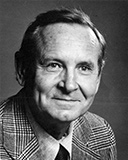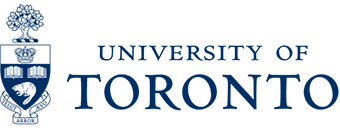In an ever-changing world, Leslie Farkas was a constant. Into his early 90’s, he was a constant presence within the Division of Plastic Surgery at the Hospital for Sick Children, sitting in his office, bubbling with an enthusiasm and energy normally reserved for children at Christmas.
He was a constant source of stimulation and interest for the house-staff and trainees who rotated through this institution. Leslie constantly championed the field of accurate and consistent facial assessment through the field of craniofacial anthromopometry. And finally, his name was constantly cited at almost any meeting involving plastic surgery that you would care to mention.
Leslie Gabriel Farkas was born on April 18, 1915 in Rózsahegy, Hungary (present day Slovakia). Following graduation from medical school at Comenius University in Pozsony (now Bratislava) in 1941, he was drafted into the Slovak army where he served on both fronts as a military doctor. His career in Plastic Surgery started in Prague at Charles University under the mentorship of Dr. F. Burian and he received his Certificate of Plastic Surgery in 1956. This was followed by a PhD (1959) and a DSc on surgical techniques for hypospadias repair in 1968.
His interest in craniofacial morphology began during his period in Prague. Early in his surgical career, he became dissatisfied with the determination of the morphological changes in the head and face using visual assessment alone. Thus, he began to explore the use of classical anthropometric methods for the quantitative analysis of faces pre- and post-operatively. He collaborated with anthropologist Prof Karel Hajnis to develop an empirical system of facial measurements to analyze the faces of patients with congenital anomalies or facial deformities due to trauma.
In 1968, after receiving an invitation from Dr. William K. Lindsay, the Chief of Plastic Surgery in Toronto, Canada requesting him to develop the area of craniofacial anthropometry as a new focus for research, Dr. Farkas moved to Canada and began his 40-year career at the Hospital for Sick Children. The emerging field of craniomaxillofacial surgery developing under the influence of Dr. Paul Tessier resulted in the recruitment of Dr. Ian R. Munro who shared Leslie’s passion for objective facial assessment techniques and led to the publication of Anthropometric Facial Proportions in Medicine co-authored with Ian R. Munro which is now in its second edition as Anthropometry of the Head and Face.
Employed at the Hospital for Sick Children, in Toronto, he continued exploring his interest in craniofacial anthropometry. Since normative data did not exist, he spent much of his career measuring faces and compiling a huge database of norms. He soon realized, however, that just taking linear measurements was not enough. The relations of measurements, that is – proportions- are of paramount importance in the evaluation of the facial framework. Dr Farkas was very much aware, that the North American White normative data he compiled could not be applied to different racial and ethnic groups. He took great effort to collect as diverse data as possible to differentiate the norms of different ethnic groups while encouraging scientists from around the world to collect their own population’s normative measurements and collaborated with people from all parts of the world. His concepts became known to all interested in anything to do with the face and the “Farkas norms” became a household name.
Leslie continued to work almost to the day of his passing. His office was next door to mine and I remember how he would routinely seek me out to tell me what he was working on and how critical it was that reconstructive surgeons appreciate the classical canons of facial anthromopetry. His distinctive accent proclaiming “How can anyone reconstruct the face if they don’t know what the normal values and proportions are?” would echo in my ear as my secretary would remind me that I had a less stimulating but necessary meeting to attend. I envied his passion and dedication. My head is still turns automatically to look and see if his door is ajar as I walk by.
Leslie’s fascination with the human face and craniofacial anthropometry has transcended the arena of plastic surgery and has influenced forensic science, lost children identification programs, three-dimensional visualization technology and computer software in the popular movie industry and orthodontic planning. His body of work included 244 scientific works and 4 textbooks. However, in compiling his lifelong fascination with the face, Leslie Farkas has accomplished an enviable achievement – he has left a legacy that will provide a constant source of reference for future generations of those interested in achieving the best possible results in plastic surgery. This is not something to be taken lightly.
Written by Christopher R. Forrest, MD


